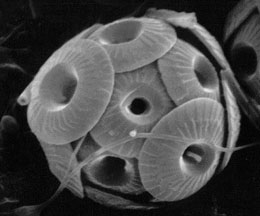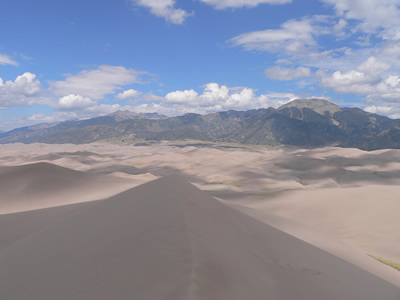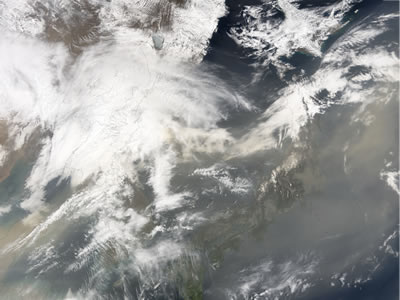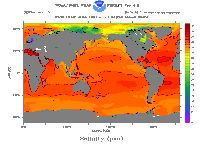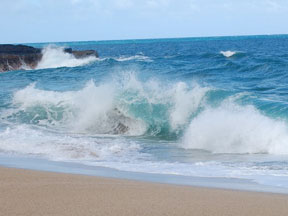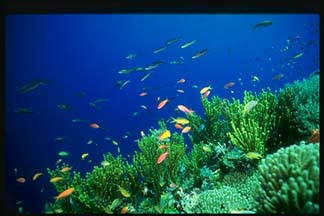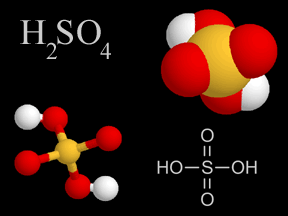Click on image for full size
Image courtesy of NASA/JPL, photograph by Stefan Gartner.
Sulfate Aerosols from Plankton
Aerosols are tiny particles or droplets that float around in the atmosphere. Aerosols play an important role in Earth's climate. Some aerosol particles help clouds form by serving as condensation nuclei. Others reflect and scatter sunlight, reducing the amount of energy that makes it to Earth's surface. The oceans are a major source of aerosols. Sea salt is lofted into the atmosphere with the spray and foam of waves, forming one type of aerosol. Microscopic plankton provide another major source of marine aerosols by emitting sulfur-based chemicals into the air.
Some species of phytoplankton emit a chemical called DMSP (Dimethylsulfoniopropionate), which is broken down by other microbes to form a second chemical named DMS (dimethylsulfide). As DMS wafts up into the atmosphere, it is oxidized to form tiny droplets of sulfuric acid and other sulfur-based acids. Chemical reactions in the atmosphere and in clouds turn these droplets into sulfate aerosols. Some droplets also stick onto other existing aerosol particles, making them larger.
Sulfate aerosols affect Earth's climate. The tiny droplets reflect and scatter sunlight, decreasing the amount of energy which reaches our planet's surface. This has a net cooling effect on Earth. Sulfate aerosols also alter droplets in clouds. This tends to make the clouds less likely to produce rain, so the clouds take longer to dissipate. More, longer-lived clouds make for a whiter, brighter planet as the clouds reflect yet more sunlight back into space. This, too, exerts a cooling influence on Earth.
At first it might seem unlikely that tiny plankton could influence Earth's global climate. However, more than 70% of our planet is covered by oceans, so there are trillions of plankton out there emitting sulfur compounds. Marine phytoplankton are by far the largest natural source of sulfate aerosols. Human activities also generate lots of sulfate aerosols, mainly as a result of burning fossil fuels. Scientists think that about 70% of all sulfate aerosols come from fossil fuel burning, while another 20% come from phytoplankton. By studying sulfate aerosol emissions from plankton, scientists get a better understanding of how similar products from fossil fuels influence Earth's climate.


